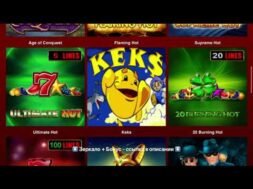Symbols of Conflict in History and Modern Culture 24.10.2025
1. Introduction: Understanding Symbols of Conflict in History and Culture
Symbols serve as visual or conceptual representations that encapsulate complex ideas, emotions, and social realities. When it comes to conflict, symbols often act as powerful markers, conveying struggles, resistance, dominance, or unity across different societies and eras. These symbols allow societies to communicate shared experiences of conflict without relying solely on words, making them essential tools in shaping cultural narratives and collective memory.
Exploring these symbols across historical and cultural contexts reveals how societies interpret and internalize conflict—whether through myth, political emblems, or modern media. Such an understanding enhances our cultural literacy and offers insight into contemporary conflicts that often draw upon these deep-rooted symbolic traditions.
This article examines the evolution of conflict symbols from ancient mythology through to modern culture, highlighting examples like the mythological figure Zeus and its modern interpretations, such as the digital symbol Le Zeus. By analyzing these symbols, we gain a richer understanding of how human societies embody conflict visually and conceptually.
Contents
- 1. Introduction
- 2. The Origins of Conflict Symbols in Mythology and Ancient Cultures
- 3. Transition from Myth to History: Symbols of Power and Resistance
- 4. Symbols of Conflict in Modern Culture: Media, Art, and Commercials
- 5. The Psychological and Sociological Dimensions of Conflict Symbols
- 6. Non-Obvious Symbols of Conflict and Their Deeper Meanings
- 7. Analyzing Le Zeus as a Modern Symbol of Conflict
- 8. The Impact of Symbols of Conflict on Cultural Identity and Social Change
- 9. Ethical Considerations in Using Conflict Symbols in Media and Culture
- 10. Conclusion
2. The Origins of Conflict Symbols in Mythology and Ancient Cultures
Mythology often encodes societal conflicts and moral lessons through symbolic narratives. Ancient myths served as allegories, illustrating struggles related to power, morality, and generational change. These stories provided frameworks for understanding human conflicts and societal values, often personified through gods and monsters.
Greek Mythology: Titans versus Olympians
A prime example is the myth of Titans versus Olympians. The Titans, representing primordial chaos and older generations, fought against the Olympian gods, who embodied order and civilization. This myth reflects the societal conflict between old and new, tradition and progress. The struggle underscores how societies interpret upheaval and change through divine conflict, transforming abstract social tensions into tangible mythic battles.
Kronos and Generational Conflict
The myth of Kronos devouring his children exemplifies generational conflict. Kronos, the Titan king, fears being overthrown by his offspring—Zeus and his siblings. This myth symbolizes fears of losing power, the destructive cycle of betrayal, and the inevitable change inherent in societal evolution. Such stories encode moral lessons about hubris, resistance to change, and the cyclical nature of conflict in societal structures.
3. Transition from Myth to History: Symbols of Power and Resistance
As societies evolved, mythological symbols of conflict transitioned into political and cultural emblems. These symbols became tools for asserting authority or resisting oppression. For example, emblems, rituals, and monuments often encapsulate conflicts rooted in historical struggles, transforming mythic archetypes into tangible representations of power.
Mythic Symbols in Political Emblems
Ancient heraldry and modern flags frequently draw inspiration from mythic themes. The double-headed eagle, for instance, symbolizes imperial power and divine authority, echoing mythic motifs of celestial conflict and sovereignty. Such symbols serve to legitimize authority by connecting political power to divine or mythic origins.
Myth and Resistance
Throughout history, symbols of rebellion—like the raised fist or revolutionary banners—often invoke mythic archetypes of heroism and struggle. These visual cues foster collective identity and motivate action, linking contemporary resistance to ancient mythic narratives of conflict and victory.
4. Symbols of Conflict in Modern Culture: Media, Art, and Commercials
In contemporary culture, symbols depicting internal and external conflicts are pervasive. Superheroes, political icons, and corporate logos often embody societal struggles, power dynamics, and ideological clashes. These symbols resonate emotionally and serve as shorthand for complex conflicts.
Modern Interpretations of Divine Conflict
A notable example is Le Zeus, a modern digital symbol that reinterprets divine conflict and power dynamics. While inspired by ancient mythic themes, it manifests as a contemporary emblem of sovereignty and struggle within digital and gaming cultures. Such symbols illustrate how ancient archetypes adapt to new media, maintaining their relevance.
Influence on Branding and Storytelling
Brands and media often borrow mythic conflict symbols to craft compelling narratives. For example, superhero logos like the shield of Captain America evoke themes of patriotism and resistance, rooted in mythic notions of heroism. This continuity demonstrates the enduring power of conflict symbols to shape collective perceptions and cultural identity.
5. The Psychological and Sociological Dimensions of Conflict Symbols
Symbols evoke emotional responses and reinforce group identities by embodying shared conflicts and values. They function as cognitive shortcuts that foster solidarity or differentiation, shaping how communities perceive themselves and others.
Emotional Responses and Identity
For example, national flags or protest symbols can elicit pride or outrage, reinforcing collective bonds or divisions. These symbols often become focal points for emotional expression, especially during conflicts or societal upheavals.
Conflict Symbols in Collective Memory
Historical conflicts leave behind symbols—like war memorials—that serve as reminders of societal struggles. These symbols shape cultural identity by linking present generations to past conflicts, fostering shared memory and understanding.
Everyday Subtle Symbols
Even in daily life, subtle symbols such as graffiti, fashion choices, or corporate branding can reflect societal tensions or ideological conflicts. Recognizing these helps deepen our understanding of ongoing social dynamics.
6. Non-Obvious Symbols of Conflict and Their Deeper Meanings
Many symbols used in art, literature, or protests are covert or unconventional, aiming to communicate conflict indirectly or subtly. These symbols often carry layered meanings, allowing for nuanced expression and interpretative flexibility.
Unconventional or Covert Symbols
For instance, secret symbols in resistance movements or coded imagery in art serve as covert expressions of societal tensions. Such symbols enable marginalized groups to communicate conflict without overt confrontation, preserving safety and fostering solidarity.
Paradoxical Symbols
Some symbols embody paradox—representing both conflict and harmony simultaneously. An example is the yin-yang symbol, which reflects the coexistence and interdependence of opposing forces, illustrating that conflict can be a component of balance.
Case Studies in Media
Hidden symbols in films or advertisements often reference historical conflicts. For example, subtle imagery in movies can mirror societal struggles, adding depth and provoking reflection among attentive viewers.
7. Analyzing Le Zeus as a Modern Symbol of Conflict
Zeus, the king of gods in Greek mythology, epitomizes divine authority, power struggles, and rebellion. His mythological background involves numerous conflicts—rebellions, disputes with siblings, and assertions of dominance—that symbolize broader themes of societal and cosmic struggle.
Mythological Background of Zeus
Zeus’s stories often revolve around conflicts for power—over other gods, Titans, and mortals. These mythic battles reflect human concerns about authority, legitimacy, and resistance, making Zeus a perennial symbol of divine and societal conflict.
Modern Interpretations: Le Zeus
Today, Le Zeus serves as a contemporary emblem of conflict and authority within digital culture. It encapsulates themes of sovereignty, technological power, and societal struggle—transforming ancient archetypes into symbols relevant to modern challenges like cyber conflicts, political upheavals, and social movements.
Embodiment of Modern Conflicts
Through its imagery and narrative, Le Zeus embodies ongoing societal conflicts—be it political polarization, technological dominance, or social upheavals—showcasing how ancient symbols adapt to reflect contemporary issues.
8. The Impact of Symbols of Conflict on Cultural Identity and Social Change
Conflict symbols influence not only perceptions but also actions. They can inspire social movements, galvanize resistance, or provoke debate, shaping the course of history and cultural evolution.
Examples of Movements and Debates
Symbols like the rainbow flag or Black Lives Matter’s clenched fist have spurred global movements, highlighting conflicts over rights and justice. Their visual power mobilizes communities and sustains collective efforts.
Potential for Understanding or Division
While conflict symbols can unite, they also risk deepening divisions if misinterpreted or misused. Responsible use and contextual understanding are essential to foster constructive dialogue and social cohesion.
9. Ethical Considerations in Using Conflict Symbols in Media and Culture
Creating and disseminating conflict symbols bear ethical responsibilities. Misrepresentation or trivialization can escalate tensions, while thoughtful use can promote understanding.
Responsibility of Creators
Artists, media producers, and marketers should consider the cultural significance and potential impact of symbols like Le Zeus, ensuring they do not perpetuate stereotypes or incite conflict.
Risks of Misinterpretation
Symbols may be interpreted differently across cultures and contexts, leading to misunderstandings or misuse. Clear communication and awareness are vital in avoiding unintended consequences.
Fostering Constructive Dialogue
Using symbols to promote empathy and dialogue requires sensitivity, context-awareness, and engagement with diverse perspectives. This approach enhances mutual understanding and peacebuilding efforts.
10. Conclusion: The Enduring Power and Complexity of Conflict Symbols
From mythic tales to digital icons like Le Zeus, symbols of conflict have demonstrated remarkable resilience and adaptability. They serve as mirrors of societal struggles, carriers of cultural memory, and tools for shaping identity and change.
Understanding the evolution and significance of conflict symbols enhances our ability to interpret present-day societal tensions and to foster more informed, constructive dialogues.
Recognizing how symbols encapsulate conflict—whether in ancient myths or modern digital media—empowers us to navigate contemporary challenges with greater cultural awareness and sensitivity. As societies continue to evolve, these symbols will remain central to our collective story, embodying the ongoing human journey through conflict and reconciliation.




